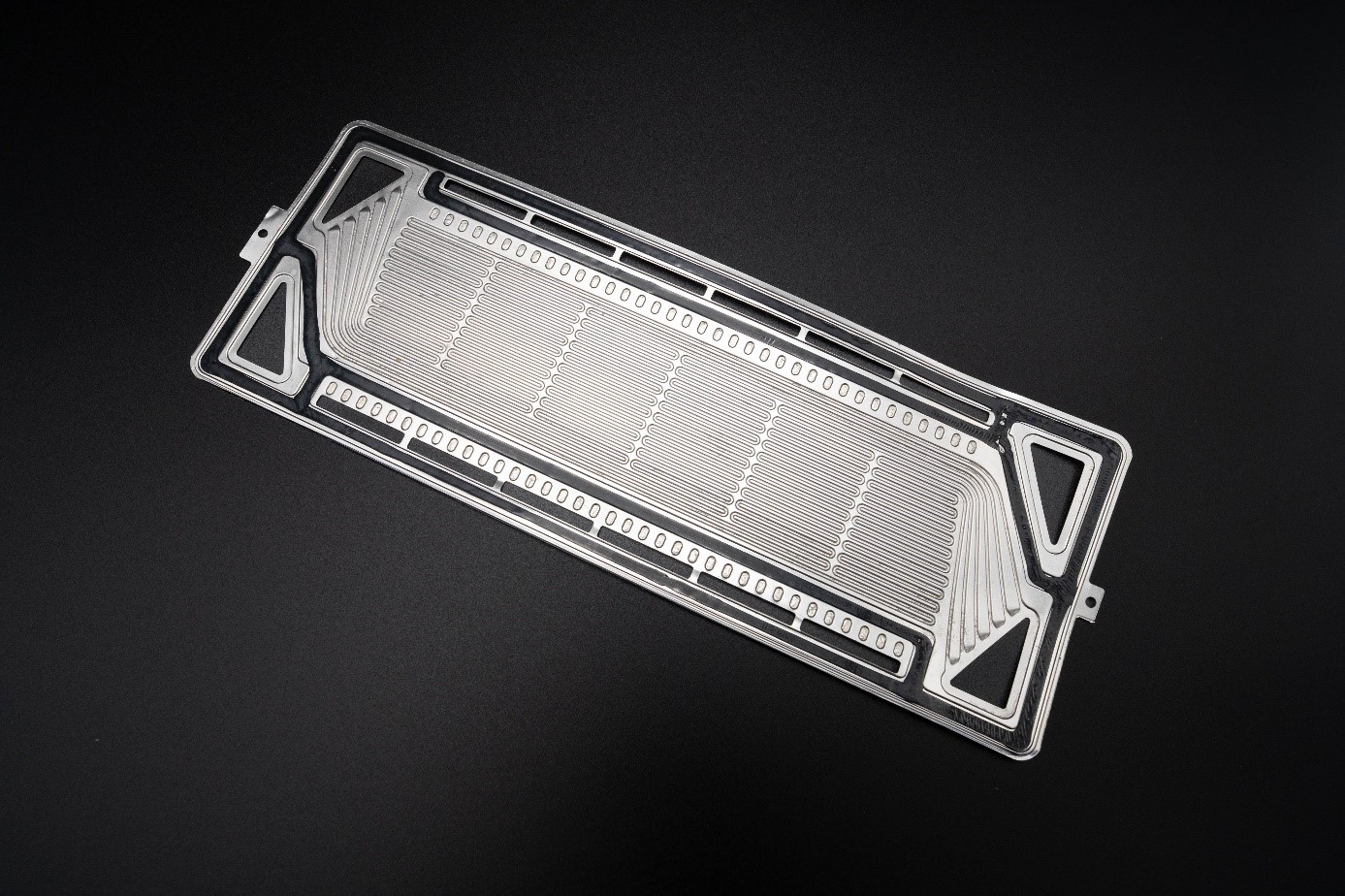Recycling of fuel cells: Adhesive strategies for assembly and disassembly
Fuel cells are an elementary component for the use of climate-friendly hydrogen in the transport sector. Fraunhofer IFAM is part of the technology alliance Stack2P in the national project H2Go in the national action plan for fuel cell production funded by the ministry of transport. A central goal is the development of recycling-friendly manufacturing technologies for fuel cells based on the principle of “Design for Recycling” and the implementation in an assembly and disassembly platform for the subsequent transfer of the components into scalable reuse, repair and recycling concepts. The goals are to increase product quality and reduce the product development cycle and development costs as well as reduce production errors.
Recycling of materials and components of the fuel cell must be ensured
The goals mentioned above are achieved through the flexible, modular and automated design of an assembly and disassembly platform based on Design for Recycling. The conception and evaluation of the recyclability of individual components as well as the determination of the diversity of variants of polymer electrolyte membrane fuel cell stacks of the next but one generation are essential for this purpose. This forms the basis for implementing recycling-friendly assembly and disassembly as well as the associated condition determination of the fuel cell stacks.
A key goal is to ensure the recycling of the materials and components of the fuel cell. In order to achieve this goal, the return of materials and components after dismantling is checked and divided into reuse, repair and recycling components. With regard to the reuse or repair of components, preparation (cleaning) and condition determination are carried out for return to the production process.
The recycling platform is used to selectively recycle the dismantled polymer electrolyte fuel cell stacks. For this purpose, a pilot line is being set up, taking into account technologies already in development for the circular production of the day after tomorrow with material-selective processing, preparation and recycling. The technological, economic and ecological recycling potential is assessed using the real data recorded from the tests using life cycle analysis. The goal is to achieve a high recycling and return rate of the materials and components of the fuel cell stack in order to enable sustainable circular production based on the technologies of tomorrow and to involve German industry directly in the development process right from the start. This can be achieved e.g. through workshops, on the one hand to scout suitable technologies and on the other hand to transfer them to the market together with the German mechanical and plant engineering.
Bonding and sealing of fuel cell stacks
The experts in the field of adhesive bonding technology of Fraunhofer IFAM have a broad experience in bonding and sealing the key parts of a fuel cell stack. Adhesive Bonding allows joining the bipolar plates, out of metal or graphite, without heat impact to material in a fast way. Typical application is done by screen-printing for fast processes. If the speed doesn’t need to be high, it can also be done by dispensing. The adhesives need to fulfil the special requirements of a fuel cell (for example to be stable against glycol). There are different adhesive systems with different process abilities to be used for this application. Adhesive selection for fuel cells, qualification, surface treatment and application to samples is one of our services for industry partners in research projects.
Stack2P: Qualification, testing and application of adhesives with the focus recycling
Bonding and sealing of fuel cell stacks is necessary for fast and affordable production processes. Therefore, Fraunhofer IFAM investigated in H2Go evaluated adhesive and sealing strategies for fuel cells which meet the common requirements, but also allow a disassembly. Fraunhofer IFAM developed with project partners automated debonding strategies for disassembly of fuel cell stacks. A combination of the right adhesion properties and a surface treatment allows a defined debonding of frame and bipolar plate. This guarantees a controlled automated separation of the bipolar plates, frame and membrane for maintenance and recycling.
 Fraunhofer Institute for Manufacturing Technology and Advanced Materials IFAM
Fraunhofer Institute for Manufacturing Technology and Advanced Materials IFAM
